The D5500 might be the newer camera, but the D5300 is still very much part of the Nikon DSLR line-up – an entry-level model, but one that offers more features than the likes of the Nikon D3300 or Canon EOS Rebel T6 / EOS 1300D.
Is it still a good buy? Let’s take a look.
Features
- APS-C CMOS sensor, 24.2MP
- 3.2-inch vari-angle screen, 1,037,000 dots
- 1080p video capture
Like a lot of current Nikon DSLRs, the D5300 uses a sensor without a low-pass filter, offering the potential to capture more detail – albeit at the risk of moiré patterning.
However, we haven’t found moiré patterning to be a major issue in stills from other cameras such as the D7200, D800E and Ricoh GR that also don’t have anti-aliasing filters over their sensors, so it seems likely that all should be well with the D5300 as well.
The majority of the D5300’s specification is the same as the D5200‘s, but there are a few key changes in addition to the new sensor.
Perhaps the most significant change from the D5200 is the switch to the new EXPEED 4 processing engine. This has given Nikon greater power to improve image quality and we are told that has most impact with noise control at the highest sensitivity settings.
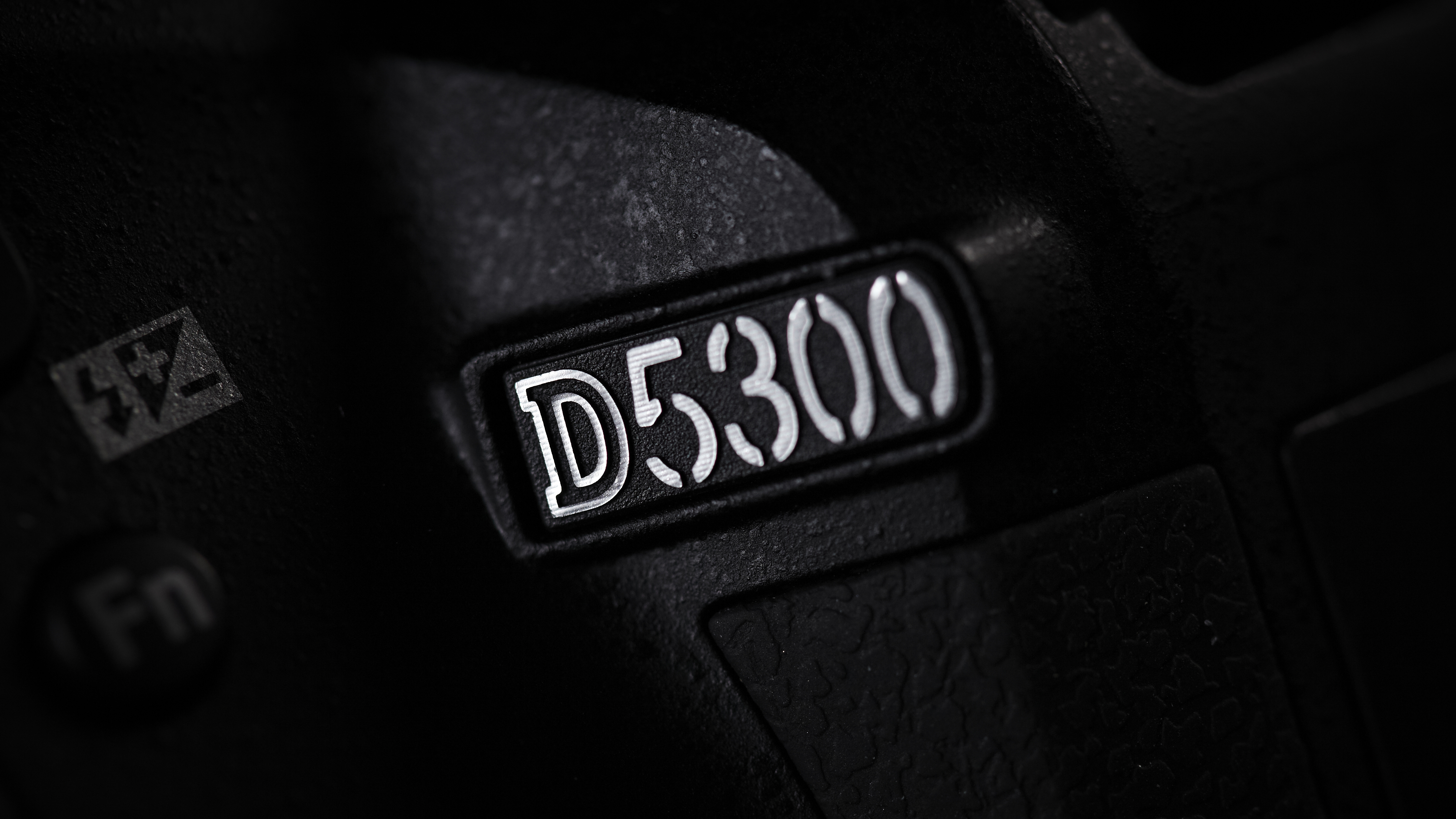
Nikon is aiming the D5300 at photographers who want to be creative, and to support this it has added two new Creative Effect modes – HDR Painting and Toy Camera. This brings the total number of Effects modes to nine; there are also 16 scene modes and the usual collection of Picture Control options.
Nikon’s Picture Control modes can be used whether you are shooting raw or JPEG images and the usual options of Standard, Neutral Vivia, Monochrome, Portrait and Landscape are available. The contrast, sharpening, brightness, saturation and hue of the colour options can be adjusted for taste.

In addition, Nikon has encouraged shooting from creative angles by boosting the size of the vari-angle LCD screen to 3.2-inches and increasing its dot-count to 1,037,000.
Another key change for the D5300 is the addition of built-in Wi-Fi and GPS technology. The Wi-Fi connectivity allows the camera to transfer images wirelessly to a smartphone or tablet via Nikon’s free Wireless Mobile Utility app. From there, images can be shared on any of the usual social networking sites. The same app can also be used to trigger the shutter remotely.
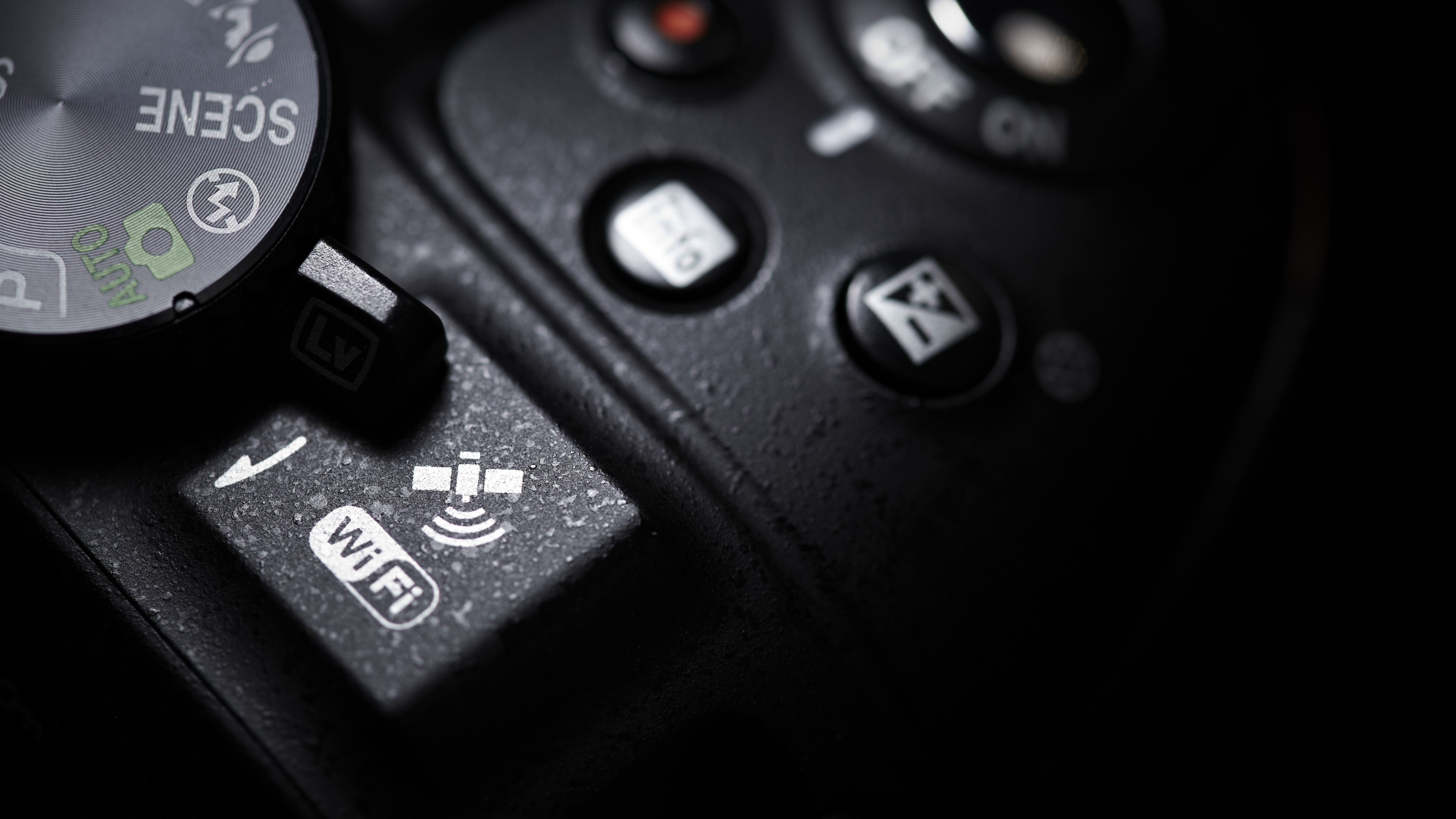
Meanwhile the GPS system allows images to be tagged with the longitude, latitude and altitude of the shooting location. Nikon’s ViewNX 2 software can be used to create travel maps which can be displayed on Nikon Image Space, or any other social networking or photo-sharing website that supports GPS, such as Flickr.
The addition of Wi-Fi and GPS technology may have been the motivation for another change made with the D5300: a new battery, the EN-EL14a. Under CIPA testing conditions this battery has a 600-shot life, 100 more than the EN-EL14. Further good news is that the EN-EL14a is backwards compatible so it can be used in the D5200 and it will be phased in across Nikon cameras.
Nikon’s dynamic range expanding D-Lighting mode has been around for a while now, but the D5300 debuts a new option in Retouch mode – Portrait Subject mode. When this is applied to a portrait image the skin tones are brightened but the background ambience is retained.
As usual, the D5300 is capable of shooting Full HD (1920×1080) movies, but the available frame rates has been expanded to include 60 and 50p as well as 30, 25 and 24p.
Build and handling
- Polycarbonate construction
- Incorporates a stereo microphone
- 480g
The D5300 is the first Nikon DSLR to be built using a monocoque construction, which means its shell is made from one single piece of material. This should make the camera stronger and because Nikon has used Teijin’s Sereebo CFRTP (a type of polycarbonate) for its construction, it only weighs 480g.
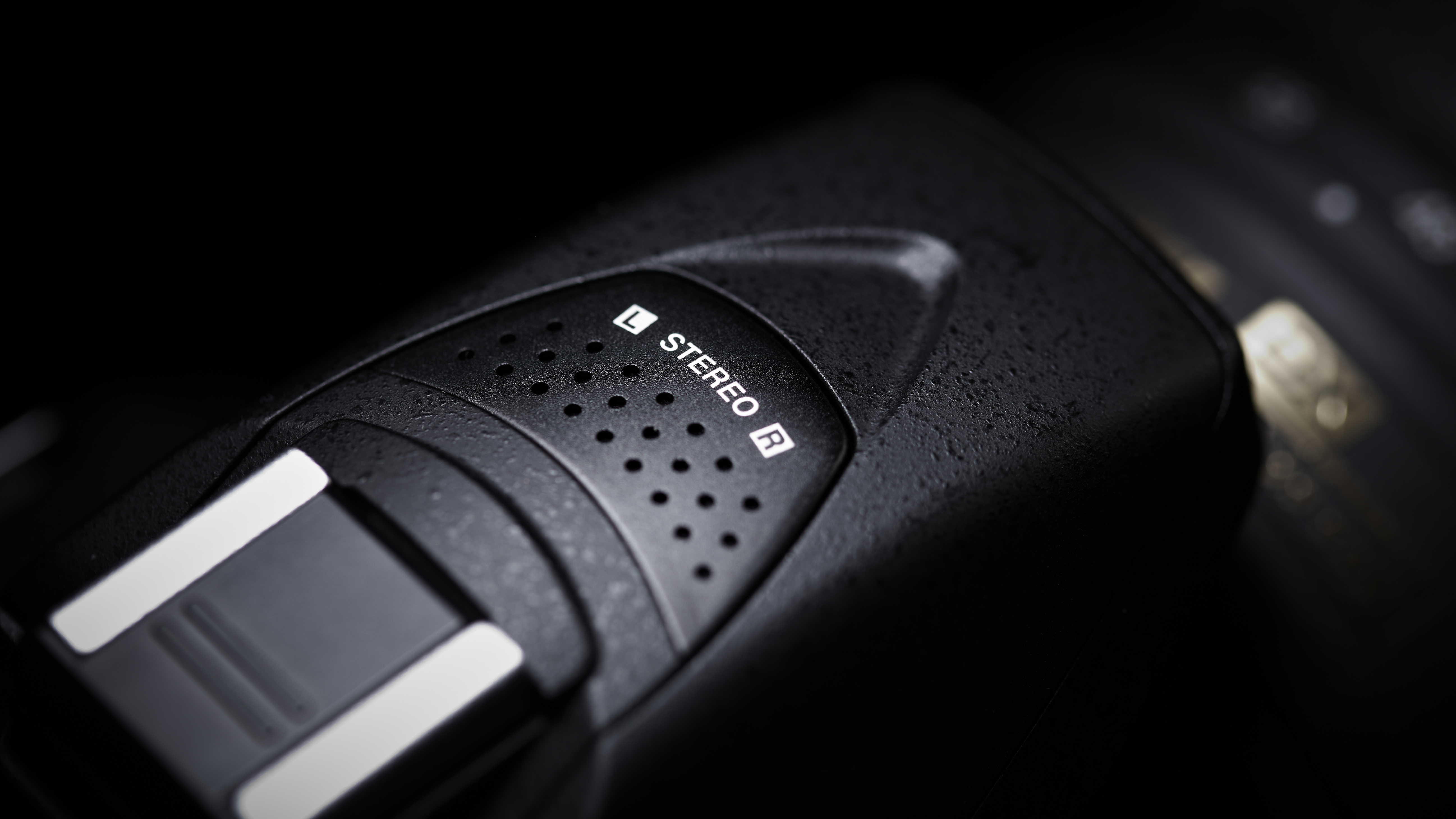
Though it doesn’t exactly have the tank-like feel of the Nikon D4, the D5300 certainly feels well-made and solid enough in your hand.
The navigation control, however, feels a little more lightweight and slightly cheaper than the D5200’s, and considerably less robust than the Nikon D610‘s. It clicks at a slightly higher pitch than either camera, which is likely to be the result of the new materials.
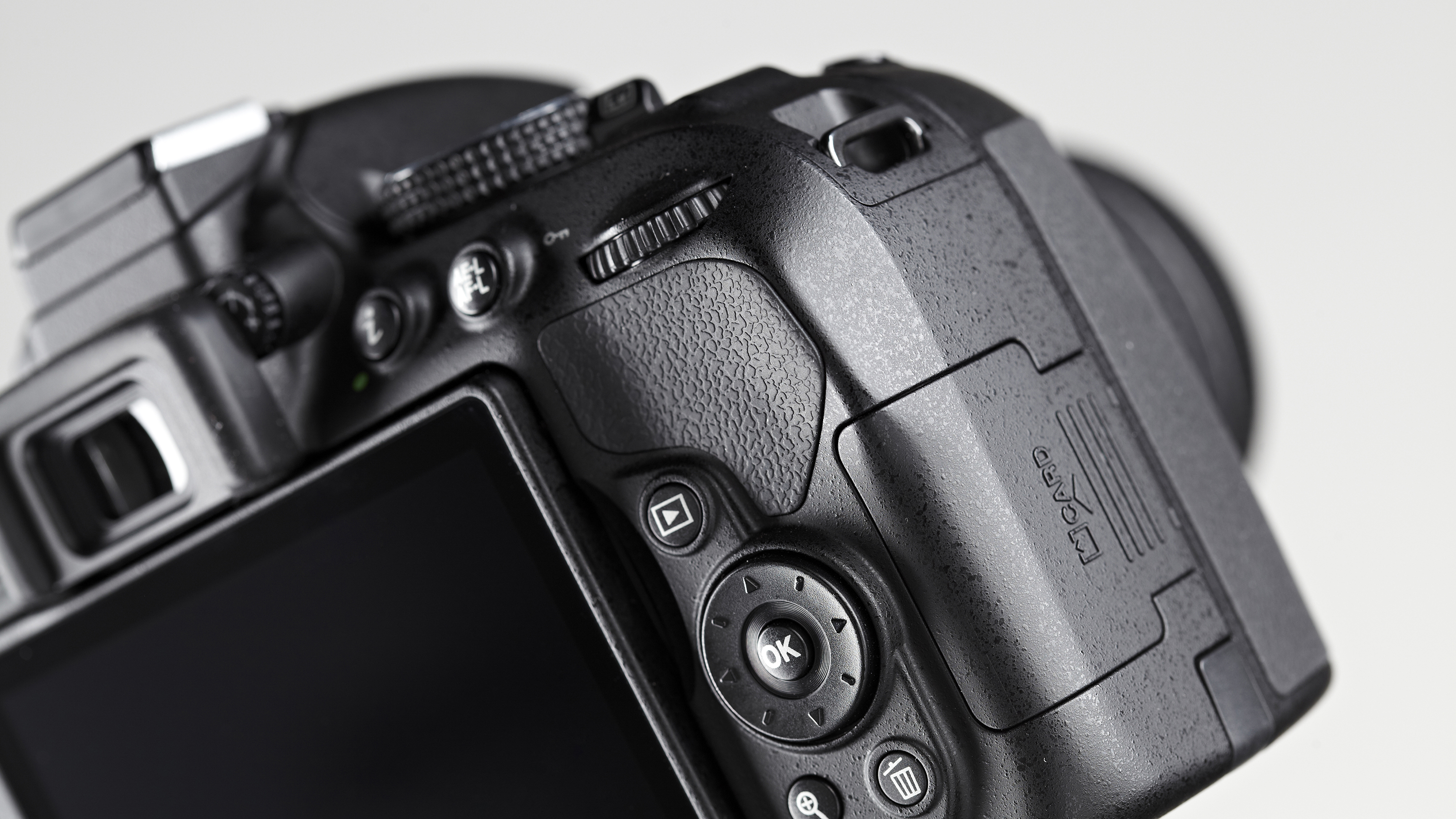
Conversely, the control dial above the thumb rest on the back of the D5300 has a slightly more positive feel and is quieter in operation than the one on the D5200.
Apart from a few extra holes for the stereo mic above the viewfinder and the GPS and Wi-Fi icons, the top plate of the D5300 looks just the same as the D5200’s. There’s still a large mode dial with all the usual PASM options and automatic options along with the Scene Effects modes.

It’s worth noting that the top of the Mode dial now has a slightly glossy finish and this makes reading the options a little trickier in certain lights than it is with the D5200’s dial.
On the back of the camera the screen is noticeably bigger on the D5300 than it is on the D5200, and there’s a bigger rubberised area for the thumb rest. But that’s it for changes, aside from the slight relocation of a couple of green dots and a change in font for the ‘I’ on the Information button.
There are relatively few buttons on the D5300 and most setting adjustments are made via on-screen controls. Some will find this attractive, but it has the disadvantage that few controls can be accessed directly, and setting adjustments are slowed as a result.
Pressing the ‘I’ button on the back of the camera brings up the Information screen, which displays all the key features for adjustment.
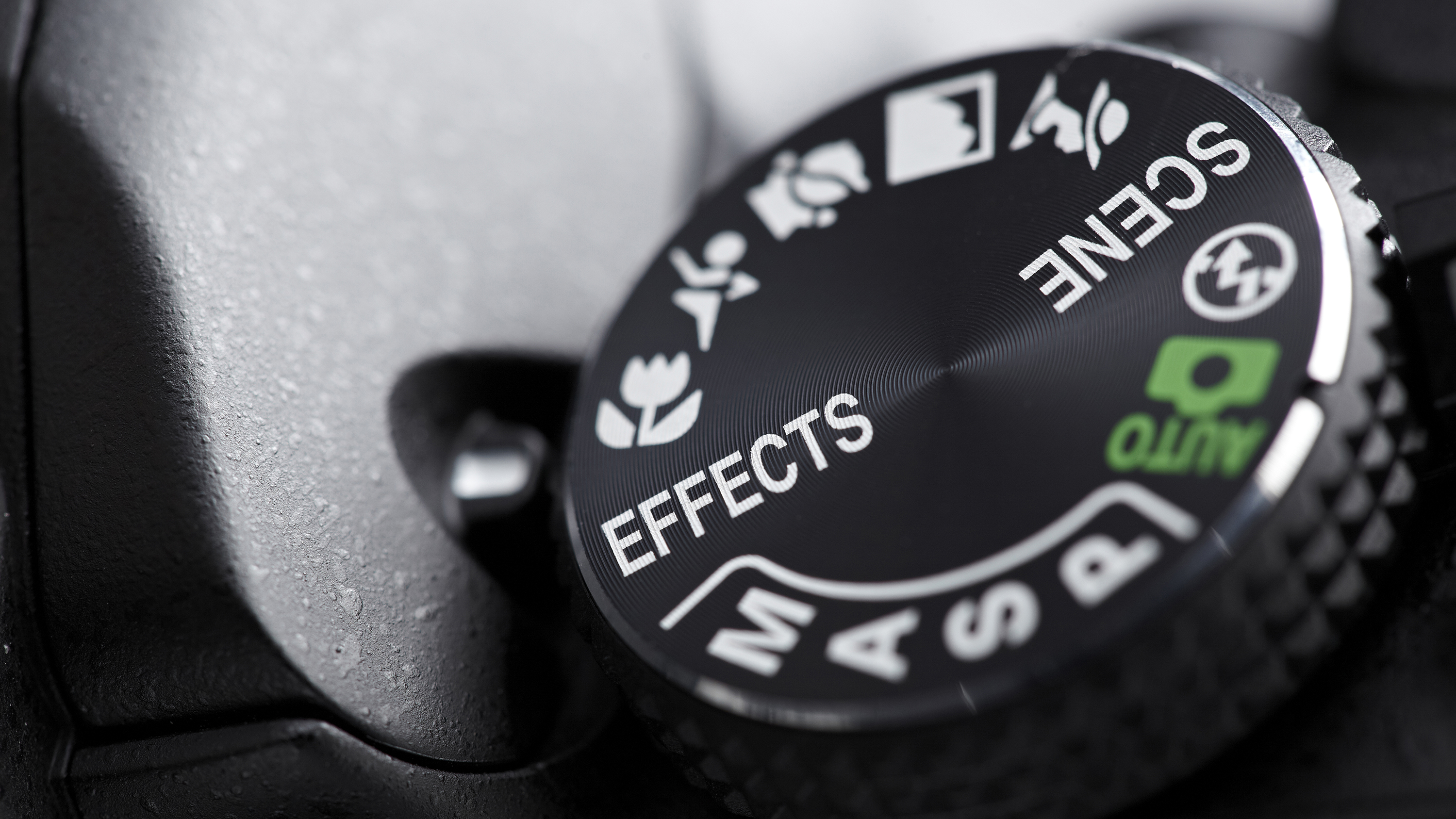
Settings changes are made simply by navigating to the desired feature, pressing the OK button and then selecting the desired option. It’s a simple approach which is reasonably fast to use, but could be made faster still by making the screen touch-sensitive.
There are up to 14 features available for adjustment, and the majority are things that you are likely to want to access on a fairly frequent basis, such as Picture Control, Focus mode, AF-area mode and Metering mode. However, it would be nice if the list was customisable so that if you never use the HDR option, for example, and don’t need to be able to switch off raw recording on a regular basis, you could swap it for Exposure delay mode, or something that you might use more frequently.
Unlike the D7100, D610 and Nikon D4 further up the DSLR line-up, the D5300 doesn’t have the button and switch arrangement for setting the focus mode and focus point selection mode. As mentioned earlier, this is done via the Information screen. It works well enough, but you can’t use it while the camera is held to your eye.
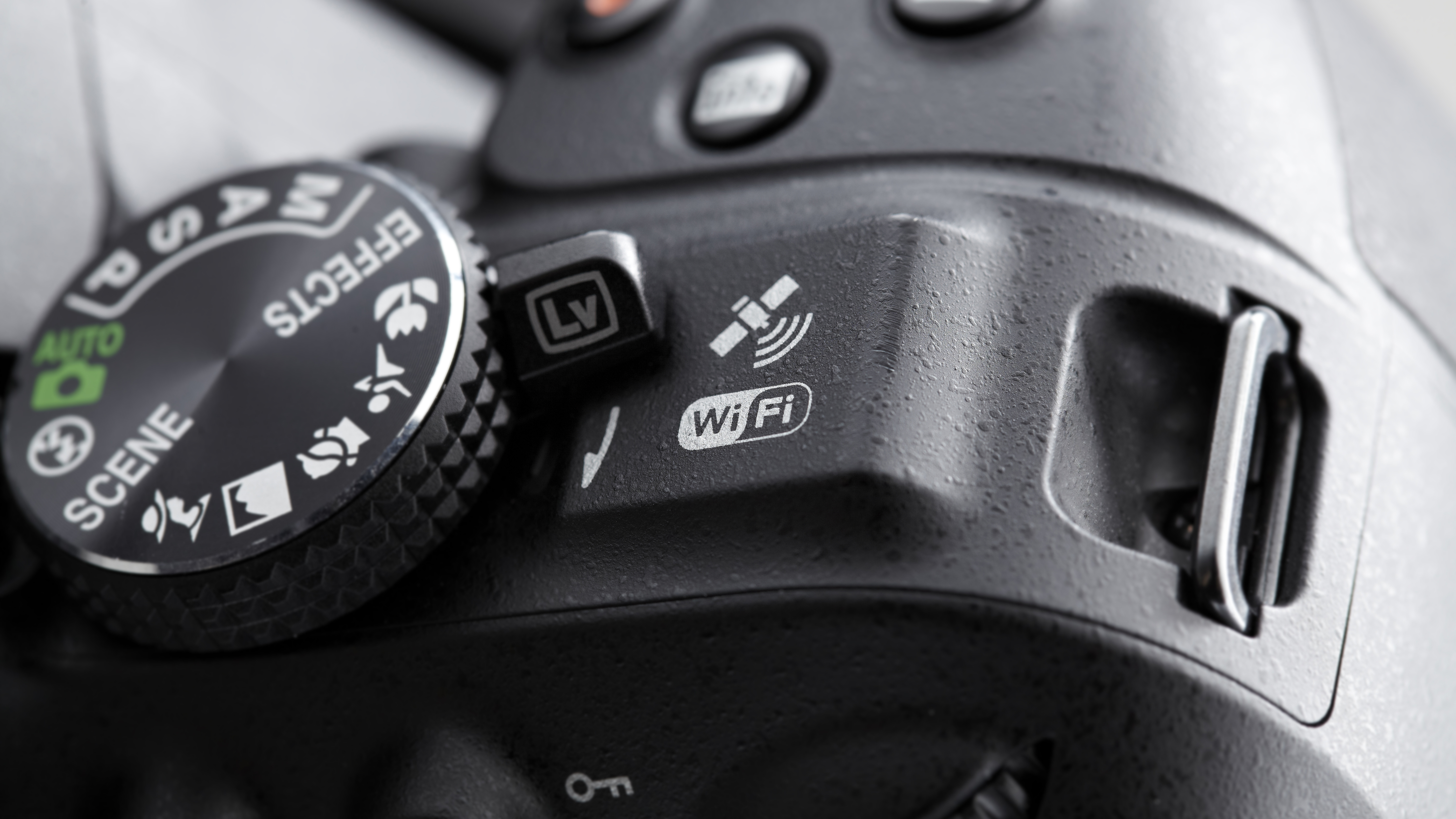
Autofocus
- 39-point AF, 9 cross-type AF points
- 39 or 11 AF points can be selected
- 3D-tracking AF
In the past we have found Nikon’s 39-point phase detection AF system (with nine cross-type points), which is employed when images are composed in the viewfinder, to be fast and accurate, and the D5300’s system is no different. Even with the kit lens mounted it gets subjects in normal outdoor daylight sharp pretty quickly.
Moving into lower light conditions, however, slows things down and there is sometimes a little indecision. As is often the case, switching to a better quality lens with a larger maximum aperture speeds things up.
While the D5300’s excellent screen encourages using live view, the contrast detection system that’s available when composing images on the monitor does not. It is accurate in decent light, but it is quite slow in comparison with the systems in the average modern compact system camera such as the Panasonic G6 or Olympus E-P5. And it’s woeful in low light; in some occasions completely failing to get the target sharp.
Fortunately, the magnified view that is available when manually focusing has plenty of detail, which makes it a great option when shooting (stationary) macro and still life subjects.
Performance
- 5fps burst shooting
- Clear and bright display
- 600 shot battery life
While we have no complaints about the D5300’s Matrix Metering system – in fact it copes remarkably well with situations that would fool some other systems – we found that using the Active D-Lighting system in its Normal or Automatic setting produces some images with mid-tones that are a little too bright. It’s not a major issue, but it’s something to keep an eye on.
That said, the Active D-Lighting can be very useful and effective when shooting high-contrast subjects. In some cases turning the Active D-Lighting up changes the exposure settings; for example, with one scene shot in aperture priority mode we found the shutter speed was increased by a whole stop (1EV) when we changed from the Low to the Extra High setting. This meant that the brightest parts of the scene were retained by the exposure shift, while the darker parts were brightened by the automatic in-camera adjustment of the image curve.
We found that the D5300’s automatic white balance system performed well in a range of lighting conditions, even managing to produce natural looking, atmospheric images in artificial light. It also produced decent results in shaded and overcast conditions.
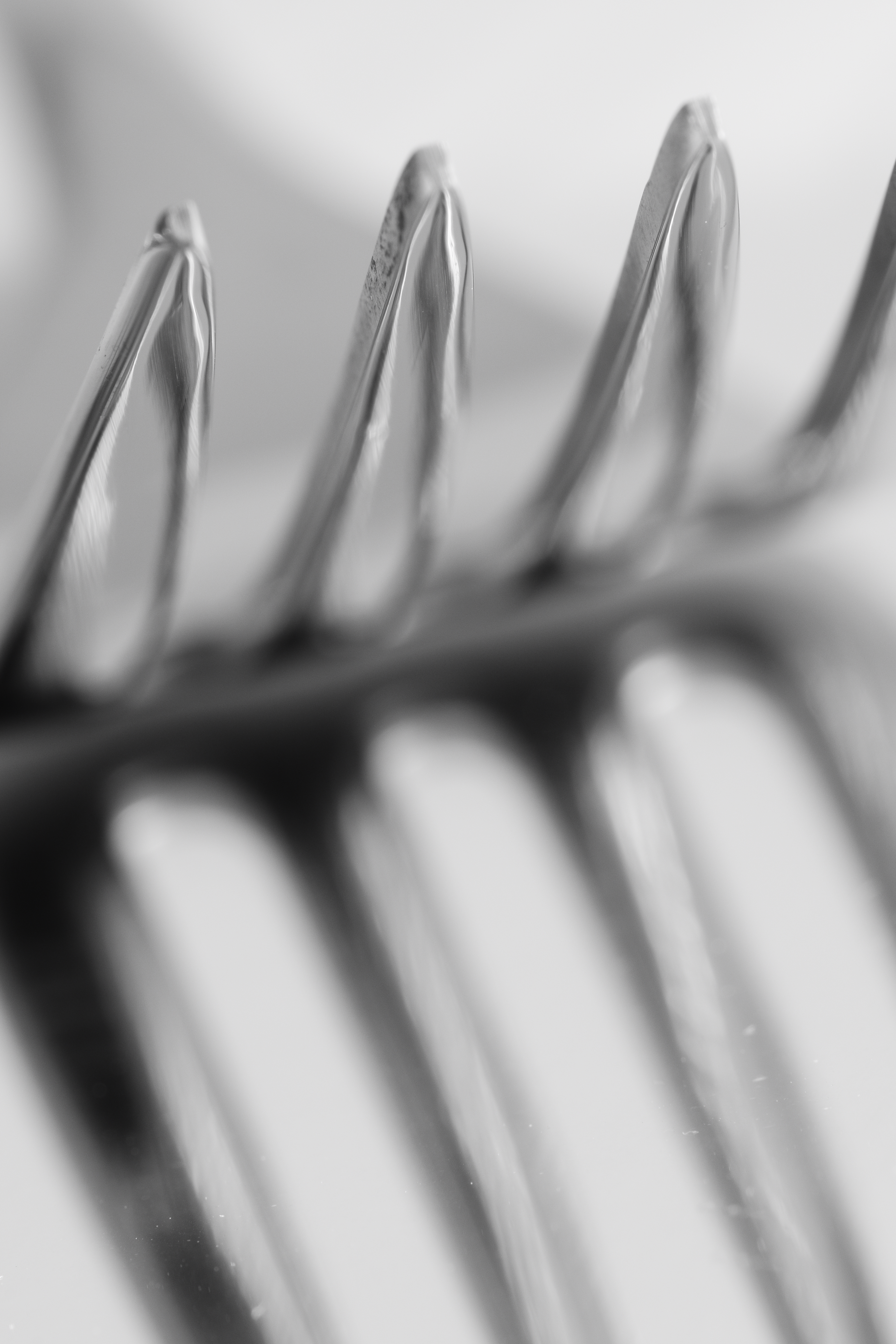
Live View is activated on the D5300 by flicking the sprung switch under the mode dial on the top of the camera. As it has a vari-angle screen, the D5300 is far more likely to be used in live view mode than some other Nikon cameras.
The new 3.2-inch 1,037,000-dot screen provides a nice clear view with a little more detail being visible, which is especially useful when using the enlarged view to focus manually.
The screen also copes reasonably well with bright light and doesn’t suffer excessively from reflections.
Image quality
- ISO100-12,800, expandable to 100-25,600
- Creative Effect modes
- No low-pass filter
As we would expect with a DSLR that’s aimed at aspiring photographers, the D5300 generally produces pleasant images that have lots of detail and nice, vibrant colours.
Interestingly, our lab tests also reveal that throughout the sensitivity range the D5300 generally produces raw files that, after conversion to TIFF, have a lower signal-to-noise ratio than the D5200’s files. This is means that the images are likely to be a little noisier. It’s something we have seen before when there is a desire to bring out more detail.

At the highest sensitivity settings, however, the D5300 tends to produce JPEG images with a higher signal-to-noise ratio, indicating that there is less noise visible.
Our tests of the D5200 revealed that images taken at ISO 3200 or higher sometimes suffered from banding in darker areas and this significantly limited the size at which they could be viewed or printed.
Naturally, we have explored this area with the D5300 and it doesn’t appear to suffer from the same problem. Noise is generally controlled well and has a random distribution and fine texture.
When viewed at 100% on screen, some luminance noise is visible in images captured at comparatively low sensitivity settings such as ISO400, but it isn’t intrusive and it isn’t apparent at normal viewing and printing sizes.
Pushing the sensitivity up to 12,800, the D5300’s native maximum, naturally produces images with more noise and slightly softer details (at 100%), but images still look pretty decent. Even at the highest expansion value (ISO 25,600), images look fairly respectable although saturation is reduced a little and details are softened considerably so it’s best to keep it for emergencies only.

On the whole, the D5300 produces images with very pleasant colours and, rather than avoiding the Landscape Picture Control mode, we found we used it quite often because it produced some nice, punchy results. It produced blues and greens with a bit of zing without going over the top or looking artificial.
Creative Effect modes are always a matter of personal taste, but it’s hard to imagine that people will have many occasions when they want to use the D5300’s HDR Painting mode. Toy Camera mode, however, with its heavy corner shading, may find favour more often.
Verdict
The vari-angle screen and Effect modes encourage the user to shoot in live view mode (and compose the image on screen), but the live view AF system’s performance lags behind that of many compact system cameras, and the screen isn’t touch-sensitive.
However, a 24-million-pixel DSLR with a 3.2-inch articulating screen, 39-point AF system and built-in Wi-Fi connectivity is still a good option for someone looking to take their photography more seriously. The control layout is relatively simple, too, so you can find the settings that you want and get to grips with the camera quickly.
Competition
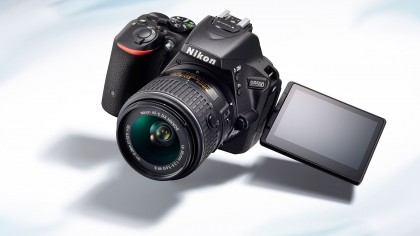
Nikon D5500
The direct update to the D5300, the D5500 is the first Nikon DSLR to get touchscreen control, plus there’s also built-in Wi-Fi – but it’s a pity GPS hasn’t been carried over from the D5300, and live view autofocusing speed is no faster. There isn’t much wrong with the D5500’s 24.2-megapixel, non-anti-aliased sensor, though. It may be pinched from the older D5300, but it still delivers excellent image quality.
Read the full review: Nikon D5500
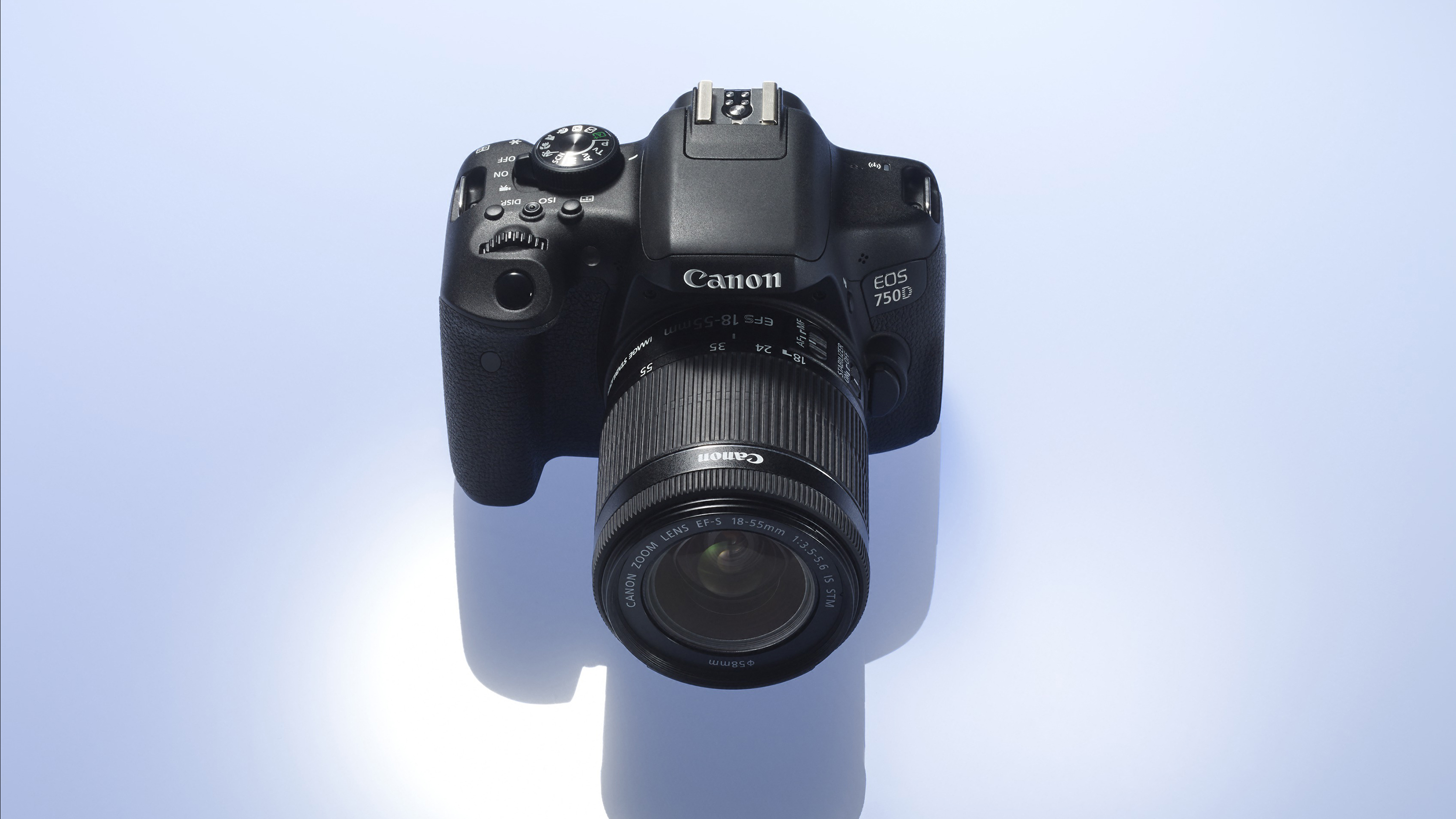
Canon EOS Rebel T6i / EOS 750D
Alternatively, take a look at the excellent Canon EOS Rebel T6i (known as the EOS 750D outside the US). The new 24.2MP sensor delivers stunning image quality with impressively low noise levels at high ISO sensitivities, as well as receiving built-in Wi-Fi with NFC pairing. There’s also a handy vari-angle touchscreen. A very solid choice.
Read the full review: Canon EOS Rebel T6i / EOS 750D
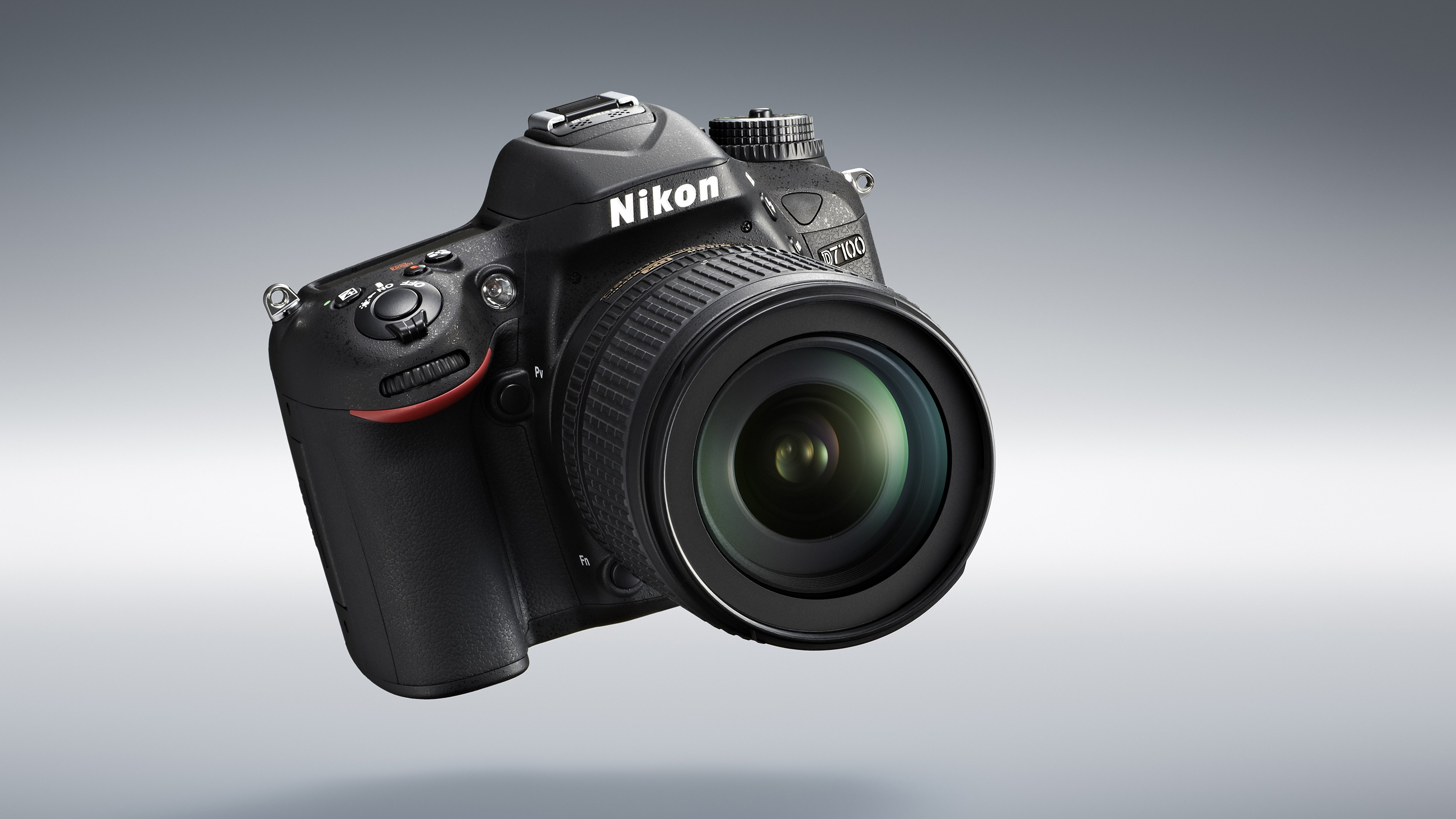
Nikon D7100
If you’re looking for something a bit more advanced, then next up the Nikon range is the D7100. An excellent performer with a wealth of features, but you will have to sacrifice a vari-angle screen.
Read the full review: Nikon D7100